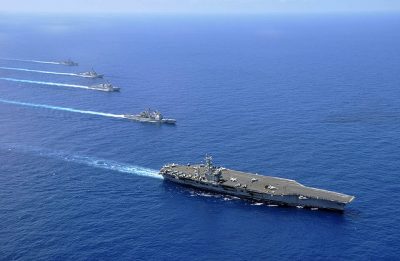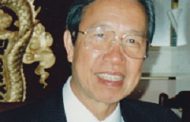If China has made the running in Southeast Asia on the basis of soft power over the last decade, the tide now seems to be turning and the United States is re-engaging with smart power. The United States has signed the ASEAN Treaty of Amity and Cooperation; President Obama has attended the first ASEAN-United States leadership summit (and will host the second meeting in the US this year); Secretary Clinton has not only attended two ASEAN Regional Forum meetings in a row, but offered US good offices to help settle diplomatically one of the pressing security issues in Southeast Asia, the South China Sea dispute. In sum, Secretary Clinton has turned the multilateral table on China. The United States is back and engaged in Southeast Asia working with the support of regional states.

Continued Chinese bellicosity and diplomatic pique runs the risk of isolating China diplomatically and eroding the soft power gains of recent years. The timing is bad for China as the regional security architecture looks set to gain a new lease on life and expand into new areas of cooperation. The first ever meeting of the ASEAN defence ministers and their eight dialogue counterparts is set to take place in Hanoi on October 12. Later that month, the East Asia Summit (EAS) will convene with Secretary Clinton attending ‘in an appropriate capacity.’ This will set the stage for the United States to join this 16-member grouping, and for President Obama to attend the 2011 EAS meeting in Jakarta.
The emergence of the EAS will scuttle China’s preference for the exclusivist ASEAN+3 process (China, Japan and South Korea) that omits the United States.
For at least the past three years China has been increasingly assertive in advancing its sovereignty claims in the South China Sea. It succeeded in dividing ASEAN and isolating Vietnam. China has even threatened major American companies, such as ExxonMobile, that if they continue to work with Vietnam to develop its marine resources in the South China Sea their commercial interests in China would be threatened.
The Obama administration has directly confronted China and its bullying. China’s claim that the US orchestrated regional states to attack China verbally is disingenuous. It has been China in the conductor’s seat orchestrating the application of muscular diplomacy to divide ASEAN and undermine the network of US alliances and security ties.
US diplomatic initiatives must be placed in the larger context of US-South Korean naval exercises, the prominent surfacing of three Ohio-class submarines armed with conventional Tomahawk long-range cruise missiles in Subic Bay, Busan and Diego Garcia, and the visit of the nuclear carrier George Washington to waters off central Vietnam to mark the 15th anniversary of diplomatic relations. The view that US primacy is in decline seems premature indeed.
Secretary Clinton’s declaration that the South China Sea is a national interest counters China’s recent assertion that the South China Sea is a core interest.
The South China Sea is a vital artery for global maritime trade including the shipping of oil and LNG. For this reason it is unlikely that China will attempt any action that can be viewed as threatening the safety of navigation and transit through the South China Sea.
Since the Taiwan Straits crisis of 1995-96, China has sought to exert naval power in the first island chain in the western Pacific to keep the US Navy at bay. Thanks to North Korean belligerency, the US Navy has returned to exercise in waters adjacent to China, the fraying US-South Korea alliance has been repaired and the drift between Tokyo and Washington halted.
When developments in Northeast Asia and combined with Southeast Asia China’s bellicosity and diplomatic outrage appear to be a sign of weakness rather than strength.
Carlyle A. Thayer
professor of politics at the University of New South Wales at the Australian Defence Force Academy in Canberra
August 31st, 2010











































One Comment
Thinh Nguyen Tu
Good thinkings